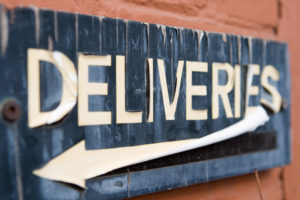
For most manufacturers or wholesalers reliant on their own fleet of vehicles to get products in the hands of B2B customers, the processes break down something like this.
Pre-delivery process
- Orders are accumulated
- Delivery routes are established
- Inventory is picked
- Trucks are loaded
- Driver checks out of the warehouse
Delivery execution
- Route is confirmed (or re-optimized) by the Driver
- Driver arrives onsite at the customer
- Products are unloaded and presented to the customer
- Customer confirms quantities and condition of products
- Any adjustments are recorded
- Customer signs confirming receipt
- Copy of signed delivery ticket is left with the customer
In some cases, the driver may also need to collect payment. The driver may also be asked to initiate a return order.
End of day
Back at the office, customer service or accounting will then be responsible for recording or confirming all of this activity, such as:
- Convert the order to an invoice in the ERP, after confirming any changes made at the time of delivery
- Record and post any payments received
- Complete the accounting for any product returns
- File away the paperwork with the customer signature, or scan the documents and file it electronically
- Account for any inventory quantity variations identified when the truck was emptied
To automate or not to automate
What's at stake for these processes depends on scale and value. The larger the fleet and the larger the transaction volume, the more opportunity for error and inefficiency.
For 1 or 2 trucks making a few daily deliveries, it's probably reasonable to handle operations manually or with spreadsheets. But the inefficiencies and potential for errors escalates quickly as the operation grows.
When a company has 5, 10, or 50 trucks making deliveries - perhaps from multiple fulfillment warehouses, the benefits of investing in delivery technology should definitely be investigated.
